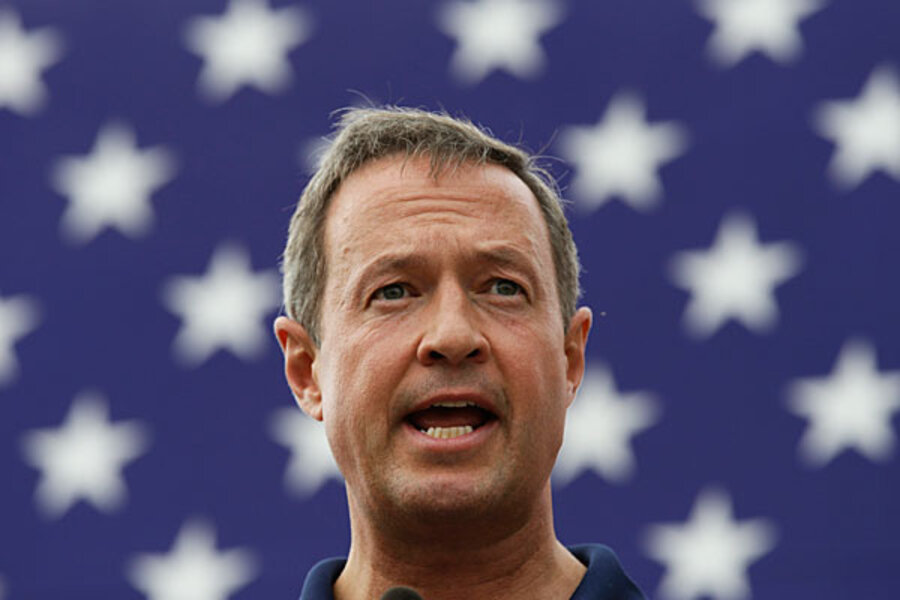Does Gov. Martin O'Malley want to be Hillary Clinton's vice president?
Loading...
| Washington
Martin O’Malley made it fairly obvious over the weekend that he’s running for president, or at least pretty darn close to deciding in favor.
Here’s what the Democratic governor of Maryland told reporters at the National Governors Association meeting in Milwaukee, according to The Washington Post: “By the end of this year, I think we’re on course to have a body of work that lays the framework of a candidacy for 2016.”
Governor O’Malley is youthful but not too young (now in his 50s), personable, and lauded for his executive skills, both as mayor of Baltimore and now a two-term governor. Still, his comment was a bit surprising. Most people hide their ambition a little more effectively this early in the cycle. But O’Malley is nothing if not ambitious. And the 2016 campaign is already well under way, especially on the Republican side.
And it may well be that O’Malley needs to be this open about his intentions to garner media attention and create buzz amid all the Hillary-mania. So what about that, anyway? If former Secretary of State Hillary Rodham Clinton is going to run, and the betting inside the Beltway is that she will, then why should anyone else even bother?
Two reasons: First, O’Malley could wind up being her running mate. Presidential nominees often select someone who has been tested on the national stage during the primaries – especially the debates – as their No. 2. Barack Obama picked Joe Biden. John Kerry picked John Edwards. Ronald Reagan picked George H.W. Bush.
If Ms. Clinton is the Democratic nominee in 2016, then it would make sense for her to select a white guy as her running mate. The unofficial rule in putting together a ticket is that you break only one glass ceiling at a time. (That’s one possible reason President Obama didn’t put Clinton on the ticket with him in 2008, among many.) Clinton would be the first female nominee for a major party, so putting a fresh-faced white-male governor on the ticket makes sense.
Clinton would be on the older end as a nominee, so going for a youngish running mate also makes sense. It introduces a new generation of Democratic leadership to the country.
The second reason for O’Malley to run against Clinton is that she might stumble. There are no guarantees in politics, as she discovered when she ran the first time, in 2007-08. When she announced her first campaign, she was the odds-on favorite. Then upstart Obama came along and outdid her with his charisma and superior campaign strategy.
Nobody is perfect on the stump, and Clinton could make a campaign-ending mistake. Or something could come out about her tenure at the State Department – Benghazi, anyone? – or in the Senate or as first lady.
Clinton isn’t likely to let us know her intentions by the end of the year. Given her universal name recognition and fundraising power, she doesn’t need to. She can wait at least until the beginning of 2015. So under O’Malley’s timeline, he will effectively announce, or close to it, before he knows what Clinton is doing.
In announcing early, O’Malley could also be hedging his bets that Clinton might not run. And in that event, the field would be wide open.








